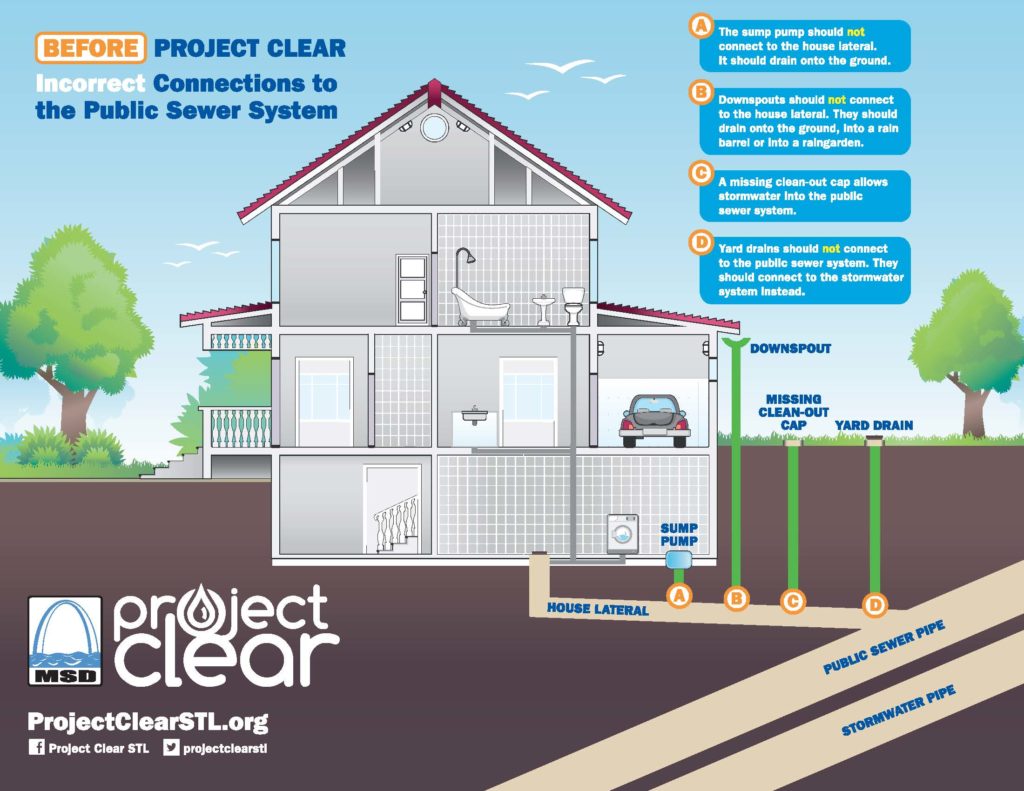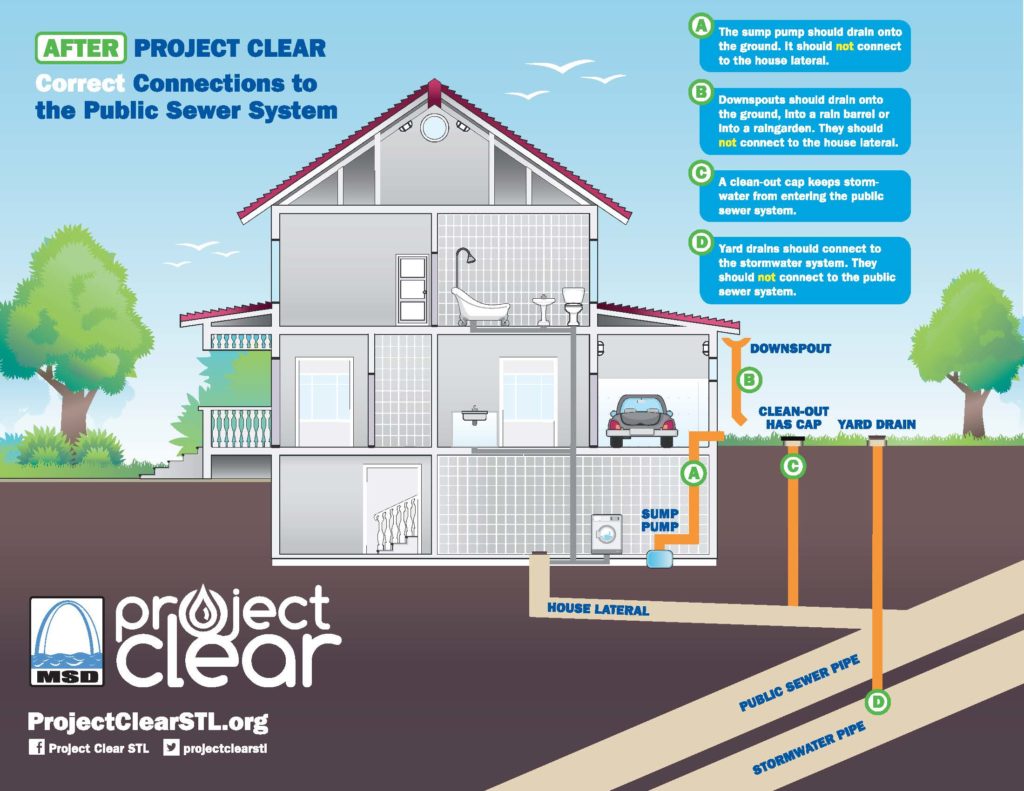Two distinct challenges. One expert team.
Much of MSD’s jurisdiction, including most of St. Louis County, is serviced by a separate sewer system with two sets of pipes. Wastewater pipes carry the used wastewater disposed of in sinks, dishwashers, showers, toilets, and floor drains in homes and businesses. Stormwater pipes carry the runoff from rainfall and snow melt that collect in yards, pavement, roads, and roofs and release it into area waterways. In the city of St. Louis and the immediately surrounding St. Louis County area, homes and businesses are served by a combined sewer system in which the pipes carry both wastewater and stormwater. Both dedicated wastewater and combined sewer pipes flow into one of seven water treatment plants, where the dirty water is cleaned and discharged into the area’s larger rivers.
Wastewater
Also known as sanitary sewers, dedicated wastewater sewers are common in the St. Louis suburbs. Ideally, a wastewater sewer system need only have enough capacity to handle the sewage from its service area. But business and residential growth can create more wastewater than the original system was designed to carry. In addition, sewers can develop cracks that allow stormwater to leak into the pipes. The pipes can be overwhelmed with more wastewater than they were designed to handle, causing basement backups or the discharge of sewage into local streams.
Stormwater
Typically, rainfall and snow melt are absorbed back into the ground or carried to a nearby creek or stream through stormwater sewers or natural drainage paths. But, with the region’s economic growth comes more homes, businesses, roads, and parking lots. With less open land and greenspace to absorb the rain, more water flows into our stormwater and combined sewer pipes. During heavy storms or prolonged rain, combined sewer pipes can quickly overfill, causing flooding of yards, streets, and parking lots, basement backups, and sewage overflow into creeks and streams.
Since its founding in 2012, MSD Project Clear is working tirelessly to reduce the number of sewer overflows and basement backups in the region by taking the pressure off our wastewater sewer system by keeping stormwater out by investing billions of dollars and 25+ years to repairing and maintaining existing infrastructure, disconnecting stormwater portals into wastewater pipes, rainscaping projects to reduce stormwater runoff, and building massive, state-of-the-art overflow tunnels.
Before and After MSD Project Clear
MSD Project Clear is a massive, community-wide effort that will positively impact the physical, environmental, and economic health of our entire region. You can help with just a few changes around your home or business:
- Ensure that your sump pump drains onto the ground, not into your house lateral sewer pipe.
- Rain gutter downspouts should drain onto the ground.
- Your clean-out drain has a secure cap to prevent stormwater from entering.
- Your yard drain should connect to the stormwater sewer, not the wastewater sewer.
Click on the images below to view “Before MSD Project Clear” and “After MSD Project Clear” diagrams of connections to the public sewer system.



